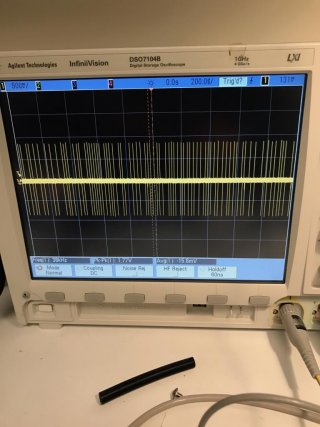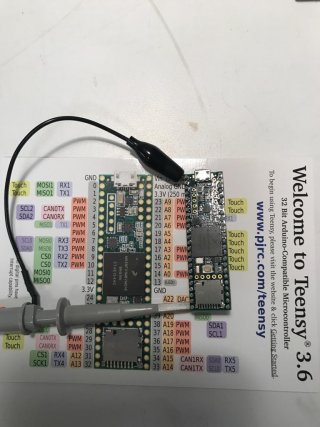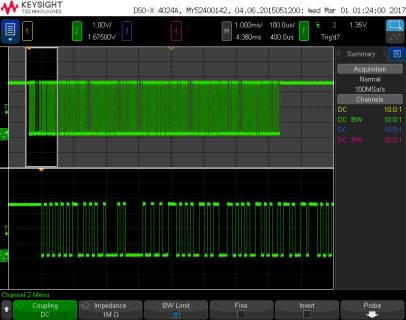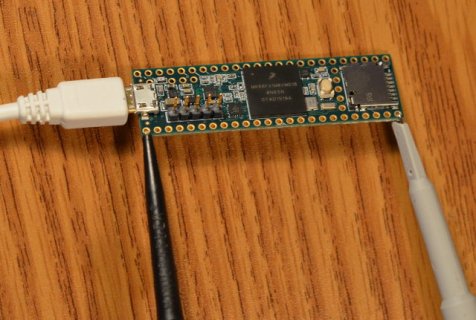I must be doing something incredibly silly here, but I am getting some strange physical behavior using the hardware UARTS on a Teensy 3.6.
To make things simple I am using the example 'EchoBoth' sketch with the following modifications:
I am running this on a brand new fresh from packet Teensy 3.6.
I put a scope on TX4 (pin 32) with the scope ground on GND (next to pin 0) , and the output I am seeing looks nothing like the normal TTL serial that I am used to - the bytes are all there, and at about the right baud, but the output is bipolar +/- ~900mv and the pulses are only 20nS wide.

Is there some sort of hardware setting I am missing?
To make things simple I am using the example 'EchoBoth' sketch with the following modifications:
Code:
#define HWSERIAL Serial4
void setup() {
Serial.begin(9600);
HWSERIAL.begin(115200);
}
void loop() {
int incomingByte;
if (Serial.available() > 0) {
incomingByte = Serial.read();
Serial.print("USB received: ");
Serial.println(incomingByte, DEC);
HWSERIAL.print("USB received:");
HWSERIAL.println(incomingByte, DEC);
}
if (HWSERIAL.available() > 0) {
incomingByte = HWSERIAL.read();
Serial.print("UART received: ");
Serial.println(incomingByte, DEC);
HWSERIAL.print("UART received:");
HWSERIAL.println(incomingByte, DEC);
}
}I am running this on a brand new fresh from packet Teensy 3.6.
I put a scope on TX4 (pin 32) with the scope ground on GND (next to pin 0) , and the output I am seeing looks nothing like the normal TTL serial that I am used to - the bytes are all there, and at about the right baud, but the output is bipolar +/- ~900mv and the pulses are only 20nS wide.

Is there some sort of hardware setting I am missing?




